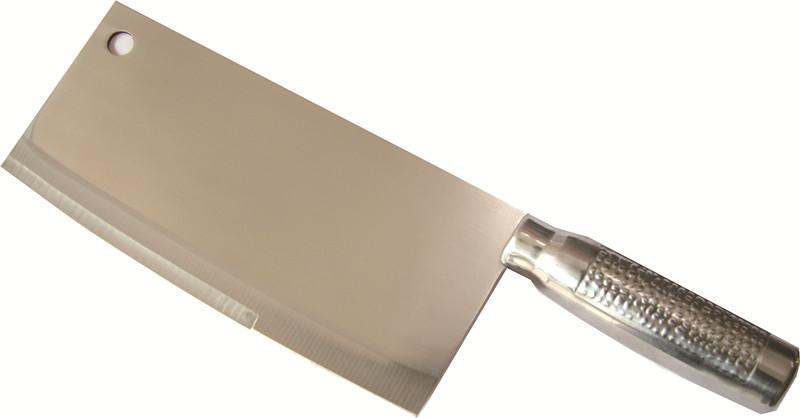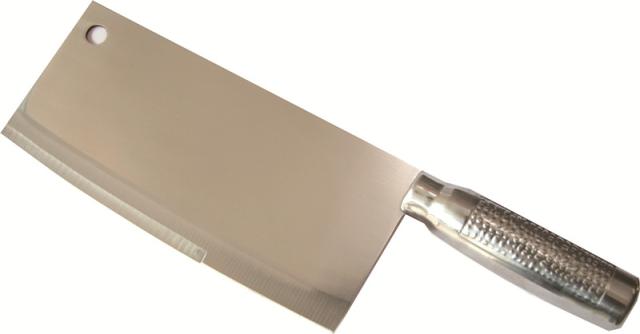Previously, I have lustily sung the praises of the parsimony of the Chinese chef when it comes to the tools of their trade. Gadgets are rarely welcome additions to the kitchen, acknowledged, if at all, with suspicion and, quite rightly, as creating more labor than they save. Even in restaurant kitchens, the layout is Spartan, meaning that, much as farmers rely on their own skills and their sure-footed oxen to pull plowshares in the country’s rural wheatfields, chefs must employ the simplest tools to master the skills and techniques that would otherwise be outsourced to mechanical or digital aids. Indeed, most home kitchens in China – agonisingly small and poorly-ventilated considering the culture’s overwhelming focus on food – simply can’t accommodate more than the bare essentials.
An enterprising Chinese chef can produce virtually any dish one cares to name with a good strong gas flame, a cast-iron wok, a sturdy butcher’s block and – most crucially – a lethally sharp caidao, the Chinese chef’s knife, not to be confused with its ungainly Western cousin, the meat cleaver.
The caidao’s beauty lies in its simple practicality, and few home cooks in China will bother with any other cutting implement. Traditionally a single piece of steel, shaped into a slightly tapered oblong with a rounded, ridged handle, it has a much thinner cross-section than a Western-style cleaver, making it far more versatile. The underside is the business edge, while the upper surface can be used to break bones and tenderize meat. It can be used to chop, slice, julienne, shred and shave – the results entirely dependent on the user’s skills. Brute force is not your friend – instead, the caidao’s heft means, so long as the blade is kept sharp, minimal effort exerted by a firm, confident hand is all that is required. This is a weapon for Arya Stark, not the Hound.
Gaining mastery of the caidao takes time and training. For those mentoring aspiring chefs in China, knife skills training courses are often used to filter out the hopeless cases who won’t be able to stand the heat. So much of a finished dish is dependent on perfect, uniform pieces easily handled with chopsticks.
A single caidao – or, if you’re fancy, two in tandem – can be used to ‘grind’ pork belly, beefsteak or leg of lamb into the perfect consistency to fill dumplings. A quick clean, and the same implement returns to the chopping board to mince the scallions, garlic and ginger, and then peel and dice any vegetables. Cleaned once more, it then slices rolled-out dough into perfectly proportioned rounds for forming the dumpling skins. There’s something wonderfully satisfying about preparing an entire meal with a single, well-balanced tool. In Japan, handmade folded-steel versions will cost the average shopper close to US$1,000. On the Chinese mainland, however, perfectly good stainless steel iterations can be had for a few bucks, and in the West, most Chinese supermarkets stock similarly affordable options.
So don’t be threatened by the caidao’s rather intimidating aspect. I guarantee you, with practice, you – and, if you shop smart, every future generation of your family – will never need another knife.

 Old Version
Old Version
